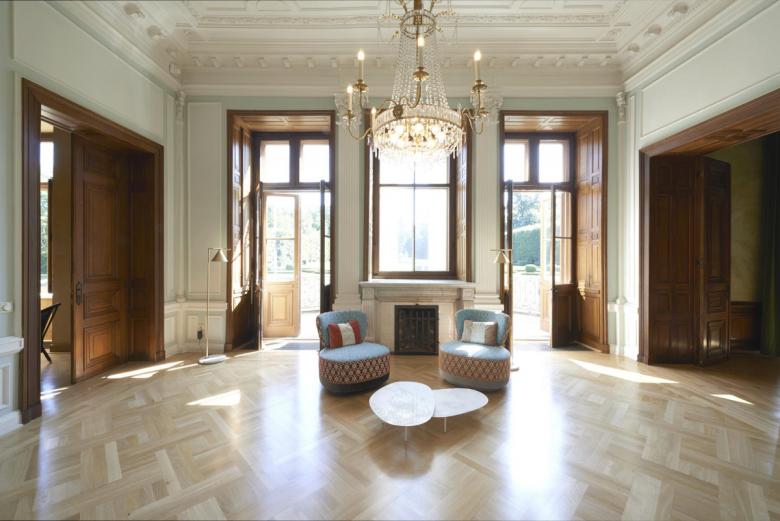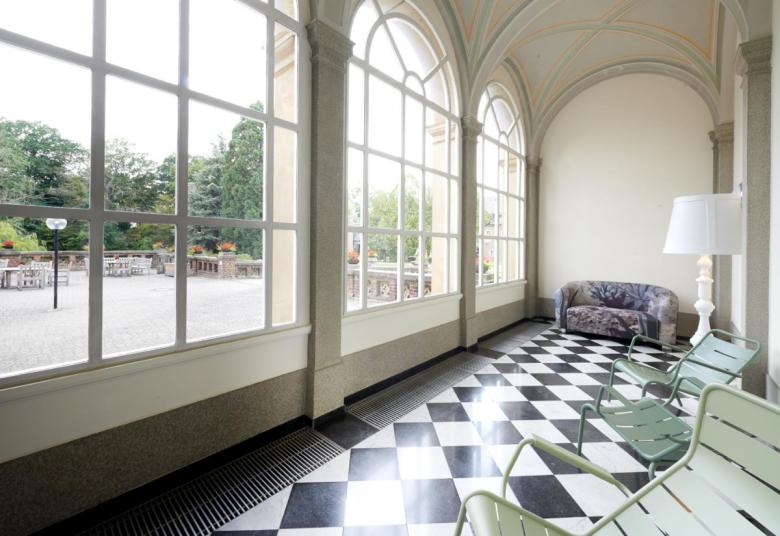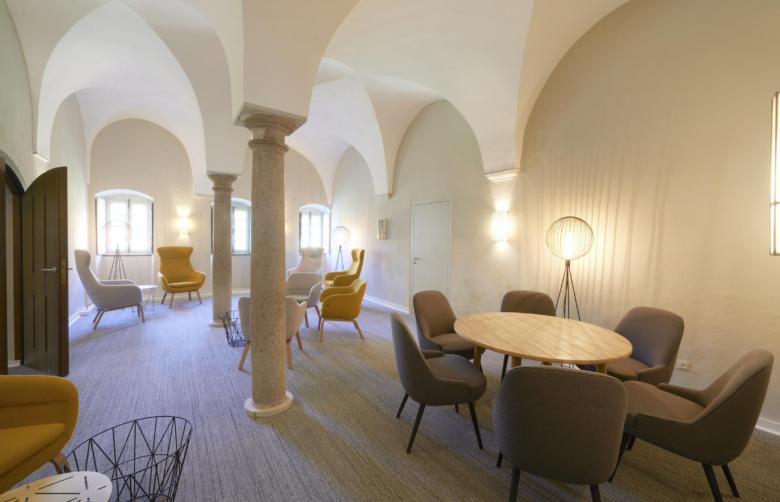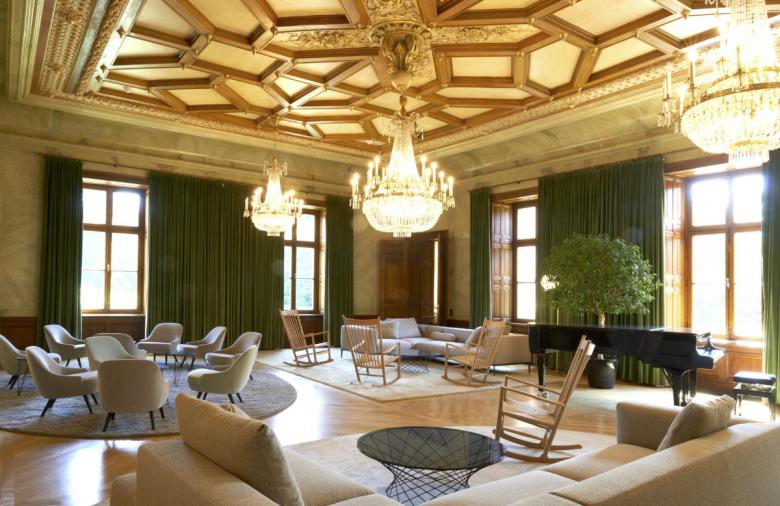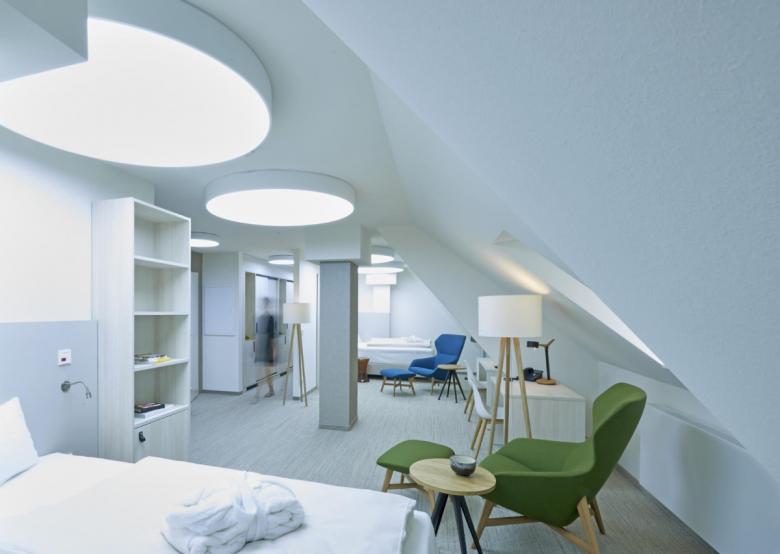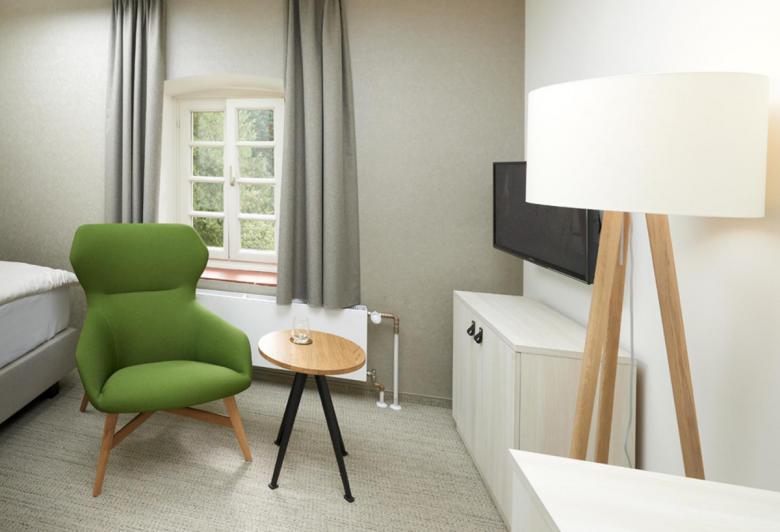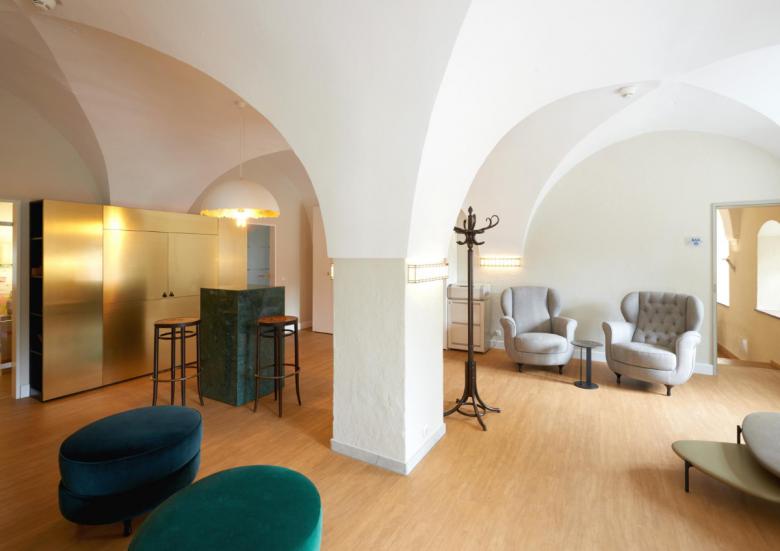Sensitive Spaces
Interior designer Sylvia Leydecker from 100% interior has designed the interiors of a private acute care clinic specializing in psychodynamic psychiatry, psychotherapy and psychosomatics. A particular challenge was working with the listed building's historical fabric.
When it comes to hospitals, it seems obvious that the focus is on people, their health and overall well-being. However, it is often overlooked that the quality of medical care is not the only factor influencing the healing process. Since sick individuals are particularly sensitive and vulnerable, the design and atmosphere of spaces play a crucial role. The relationship between body and space is especially significant in mental health conditions and hence in psychiatric care facilities. Designing such spaces is a special challenge for architects; the interior design must also take into account the special needs of patients.
In this particular case, interior designer Sylvia Leydecker faced the challenge of working with a listed castle in Erftstadt. The project required a sensitive approach to the building's historical fabric in many respects. Since 2019, Schloss Gracht has housed a private acute care clinic for psychodynamic psychiatry, psychotherapy and psychosomatics. »The investor wanted attractive spaces that would maintain the balance between old and new while also supporting the offered presence-based therapy. He gave me a lot of freedom in the implementation and trusted my expertise,« Leydecker explains in an interview.
She decided to incorporate the architectural features of the medieval structure into her design concept. The idea of the castle as a place of refuge is almost inscribed in its history as a fortified estate. Leydecker believes that this historical background, along with the building’s unique location in the middle of nature, has an emotionally stabilizing effect.
When developing her interior design and refurbishment concept, Sylvia Leydecker drew on her extensive experience in the healthcare sector. In her work, the interior designer always begins with the specific framework conditions of each project. On the one hand, she takes into account the history and typology of the building – in this case also for reasons of monument protection – and on the other, she focuses on the needs of the operator and therefore also those of the patients when designing.
The primary goal is to create an environment where patients feel safe and secure during their stay, aiming to establish what is known as a »healing environment«. Leydecker describes her approach as »designing as an embrace«. She mentions that a colleague once compared her working method to the structure of a cauliflower: you have to consider many individual aspects while maintaining a clear view of the big picture, she summarizes her approach.
The creative leeway given by the client allowed Leydecker to highlight the grandeur of the castle's historically significant rooms while also maintaining a sense of warmth and security. In the hall-like, communal rooms of the castle, she designed several seating islands, paying particular attention to the sedate and modern design of the carpets and furniture.
The high quality and pleasant feel of the materials are not superfluous luxuries, but rather »a feast for the senses,« as she puts it. The harmonious interplay of textures, materials, colors and shapes reinforces the idea of a holistic approach. There is a growing awareness in healthcare architecture that spaces should cater to the particularly sensitive perception of sick people.
Research in evidence-based design has demonstrated the crucial role of the circadian rhythm for human well-being. Since it wasn't possible to alter the size of the windows in the patient rooms, Leydecker compensated for the lack of natural light by using artificial lighting that can be adjusted to match the circadian rhythm. The patient rooms function like protective cocoons into which one can retreat. The color shades are muted, the floors are carpeted and the furniture is simple, with a few accentuating details.
In contrast, the furnishings in the larger communal spaces are bolder. Leydecker believes that the different emotional states of patients should also be reflected in a balanced mix of spatial atmospheres and differentiated lounge areas within the clinic. Equally important is the right combination of a calm appearance from a distance and a surprising effect up close. Aspects such as the direction of views and pathways are also crucial in conveying a sense of security. Leydecker is adept at using interior design to mitigate uncomfortable sensations.
When asked about her role models, Leydecker reveals a broad range of inspirations, explicitly not referring to classic hospital models. This is because older psychiatric facilities often carry negative connotations and usually do not serve as valid architectural references. The interior designer drew on her extensive experience and was inspired by good contemporary examples of hospitals worldwide. A hotel stay in London gave her the idea to forgo a traditional reception desk in favor of using tablets, which aligns with the concept of presence-based therapy. However, Leydecker is quick to emphasize that clinics are not hotels.
Regarding the treatment of the historical context, she was inspired by the Japanese concept of Wabi-Sabi, which sees patina as an integral part of beauty. The psychiatric clinic at Schloss Gracht is a prime example of how the demands of healthcare can be combined with interiors offering a high quality of stay. The numerous awards and accolades the project has received speak for themselves.
